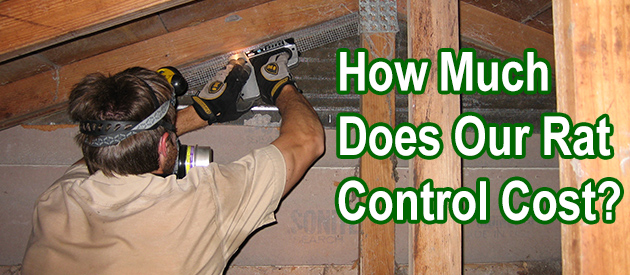Knox County, Knoxville Rat Control Situation:
I own a 2 story w basement corner row house in Knoxville. Last night while asleep on the couch in my first floor living room, noise in my ceiling by the front wall woke me up. Sounded like the scurrying of 1or 2 mice. Joists run the width of my house, from the outer wall to my neighbors house, so that space leads to nowhere. No food, water, or other openings are available. Should I be concerned, should any (?) action be taken?
One story concrete slab house with rats in attic. I have sealed up every hole to the attic I can find. The last thing I did was put the 1/2" wire mesh on all the vent pipes on the roof. The wire mesh on all the stacks, seemed to fix my problem, but about 2 months later they are back. I put up some security cameras in the attic and at bottom of a double wall space for plumbing, and can see the rat coming down and going up at bottom of a 2" pvc vent pipe obscured by a wall between two bathrooms with a tub on one side and shower on the other. The vent pipe is for the tub and shower. From the top of wall in the attic, I was able to cut out around the pipe and see down the wall about halfway down the 2" pvc vent was split (offset) maybe broke during construction where 2 pipes were joined together. Could not see actual chewed off part, but is probably there. I can see that the rat could get in there, but my question is where or how is he going outside besides into the sewer? The top is sealed with the wire mesh. I can fix the split pipe easily by tearing out the shower wall, but do you think that would fix the entry problem? How long can rats stay in attic without going outside for food? Do attic rats tunnel under a concrete slab house for entry?
Knoxville Rat Control Tip of The Week
The Reasons Why So Many Rats Live In Big Cities
Since ancient times, rodents have noticed how humans have created comfortable dwellings that in turn often house large amounts of food. The invasion of people's homes and privacy by rats is due to their constant search for shelter and food.
Rats can chase man wherever he goes, in order to continue to benefit. These animals can have a great capacity to adapt to the different environments humans live in. The rodent's diet consists of anything and to get it they can gnaw, climb, jump, run, and even swim.
A Big City To Share
With the settlement of large cities, human beings have grown in population and their consequences on the planet too. The environmental pollution of large cities represents a serious danger caused by people themselves. However, for rats, it has represented the peak of their population growth rate.
Human beings transporting themselves from one place to another, wherever they go, will take the rats along with them, having to share their cities. These animals have become pests to many people because it is exactly in the habitats of humans that they find the perfect conditions to live comfortably.
The More Garbage, The More Rats
Rodents can be phobic animals, that is, they fear new places and prefer to move through the same paths their whole lives. The exploratory and inquisitive instinct that characterizes rats is due to their need to survive in the absence of shelter. Rodents consume one-fifth of the world's food supply each year. The garbage dumps in big cities, day after day, are filled with new food remnants that provides rats with everything they need to survive.
Today, it's very likely that you'll come across a rat in any city in the world. However, people take care of their homes by being advised by professionals who teach them ways to combat this urban pest.


